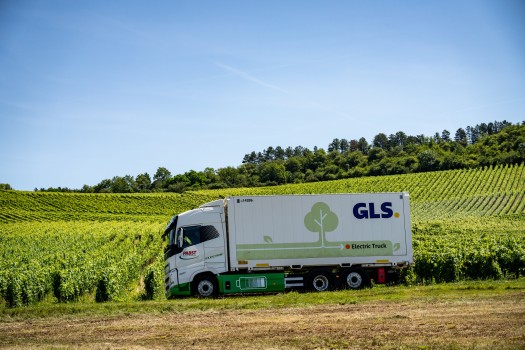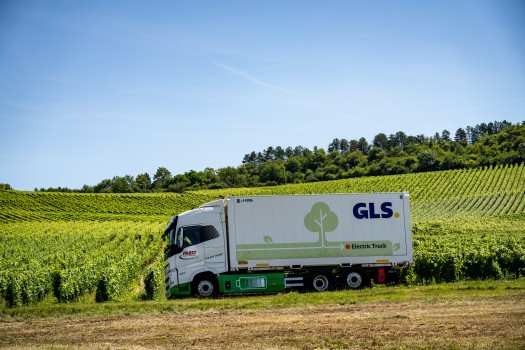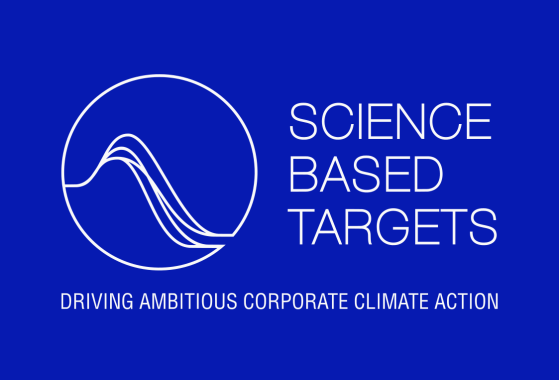Our journey to net-zero¹
Climate change is one of the most pressing global challenges, posing significant risks to our environment and communities. At GLS, we acknowledge our responsibility in addressing our environmental impact.
We are committed to achieving net-zero 1 across our operations by 2045, in line with the Science Based Targets initiative (SBTi). Our science-based targets (SBTs) guide us in our efforts to gradually cut emissions and ensure our reduction path aligns with global climate objectives.
For us, this commitment is more than a target—it’s an essential part of how we operate and contribute to the reduction of our environmental impact.
Our environmental roadmap
In addition to our science-based targets, our environmental strategy includes GLS-specific ambitions to support our net-zero 1 journey.
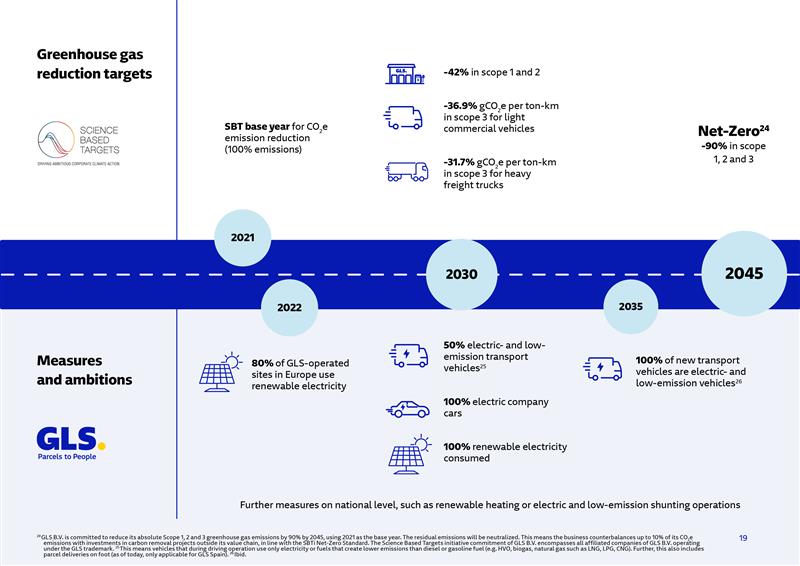
How we will achieve net-zero¹ by 2045
Since road transportation services are GLS' core business and accounted for approximately 90% of the company's carbon emissions in 2024, reducing emissions in this area is central to our transformation efforts.
As part of our group-wide environmental strategy, we are focused on converting the predominantly subcontracted transport fleet to electric- and low-emission modes
2 , such as electric vans, cargo bikes, and the usage of biofuel and biogas. Measures for introducing these vehicles vary by country, tailored to local market conditions to maximise individual impact. To support this fleet transformation, we are investing in infrastructure upgrades at our depots, including the installation of charging infrastructure, enhancements to the power supply, and the implementation of load balancing systems and electricity meters.
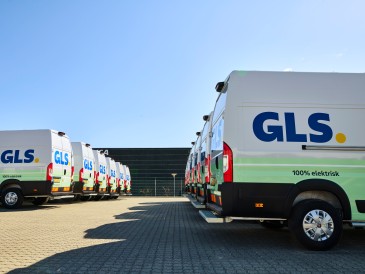
Furthermore, we are upgrading our existing depots and hubs to reduce our CO2e emissions by increasingly using renewable electricity, installing photovoltaic systems and implementing electric vehicle charging infrastructure. We are also replacing fossil heating systems with renewable options, such as electric heat pumps.
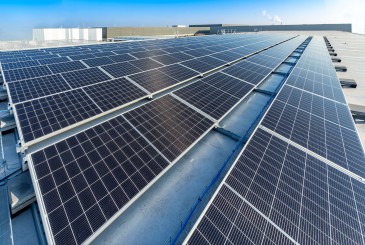
We take a holistic approach to these challenges, seeking solutions both within our corporate boundaries and in collaboration with our business partners.
GLS' science-based targets
GLS’ science-based targets are published on the SBTi target dashboard under “General Logistics Systems B.V.”.
How GLS calculates its emissions
At GLS we report our carbon emissions Group-wide in accordance with the Greenhouse Gas Protocol.
We include Scope 1, 2, and 3 emissions 6 in our calculation and disclose our emissions in carbon equivalents (CO2e), which means that other greenhouse gases (e.g. methane) are also considered.
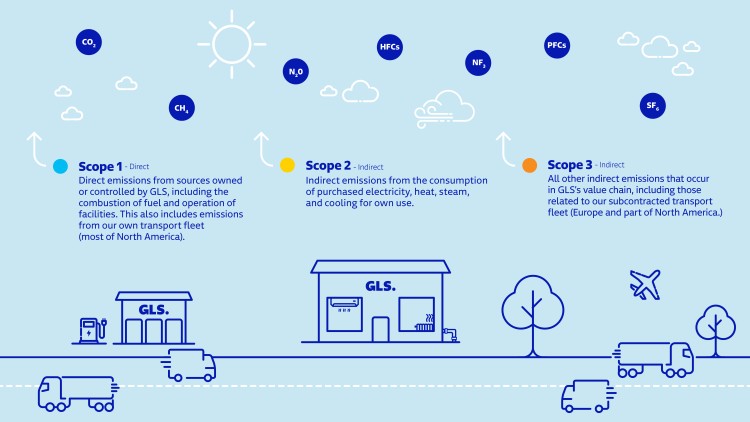

Supporting documents
1 GLS B.V. is committed to reduce its absolute Scope 1, 2 and 3 greenhouse gas emissions by 90% by 2045, using 2021 as the base year. The residual emissions will be neutralized. This means the business counterbalances up to 10% of its CO2e emissions with investments in carbon removal projects outside its value chain, in line with the SBTi Net-Zero Standard . The Science Based Targets initiative commitment of GLS B.V. encompasses all affiliated companies of GLS B.V. operating under the GLS trademark.
2 This means vehicles that during operation create either no emissions (e.g. electric or hydrogen vehicles) or fuels that create lower emissions than diesel- or gasoline fuel (e.g. Natural Gas, HVO, Biogas). Further, this also includes parcel deliveries on foot (as of today, only applicable for GLS Spain).

